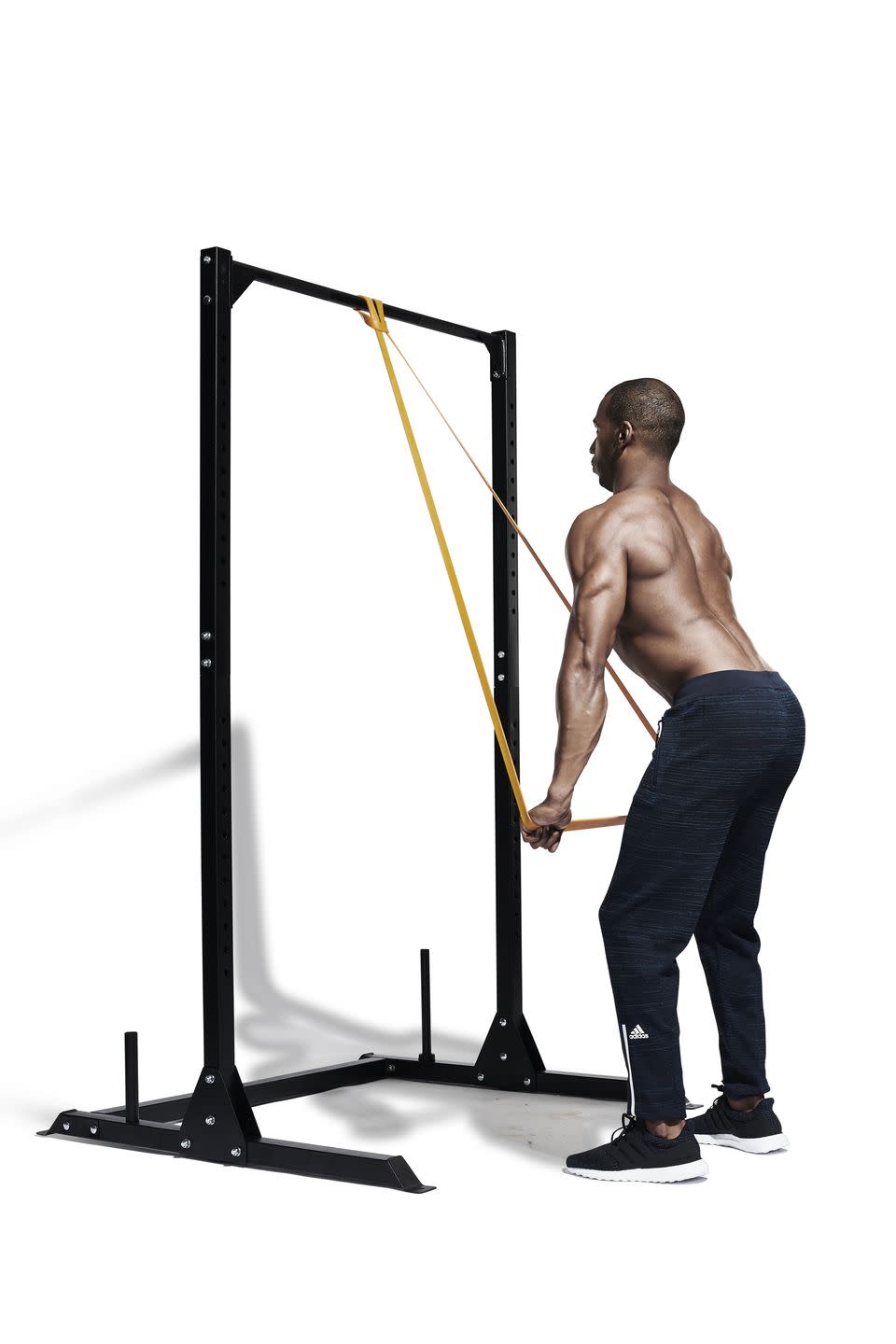Do This 'Lengthened Emphasis' Back Workout for Superior Gains, Says Exercise Scientist

With all the buzz surrounding the lengthened partial research, the ways in which we can implement these techniques in our training have also garnered significant attention. To perform lengthened partial reps, essentially means to focus on the phase of the lift when the muscles are lengthened or stretched. This can then increase the likelihood of muscular gains, which is what we're all here for.
Listing the best lengthened partial exercises, Dr Mike Israetel shares a back workout to take our hypertrophy training to the next level. However, it isn't for the faint of heart.
Exercise 1: Pull-ups to Partial Pull-ups

Israetel recommends: To start with a few sets of the lat pull down machine or assisted pull-up machine, gradually increasing in weight. Then, a potentiation set for pull-ups, of just a couple reps.
'This is a lengthened bias back workout. But lengthened bias or lengthened emphasis doesn't mean we just totally get rid of the shortened position,' says Israetel.
Instead, he outlines that we do a combination of full range of motion and partial range of motion reps:
2 x full range of motion pull-up sets controlling the eccentric.
Followed by another 2 supersets, first performing full range of motion, then performing just the lengthened portion (partial reps) by themselves, controlling the eccentric on the way down.
Exercise 2: Lat Prayer to Partial Lat Prayer

Israetel recommends: Similar to pull-ups, you'll perform a combination of full range of motion and lengthened partial reps after some of the sets, when full ROM is no longer possible.
He outlines:
High reps: 10-20 reps per set.
2 x full range of motion lat prayer sets.
Followed by another 2 supersets, first performing full range of motion, then performing just the lengthened position (partial reps) by themselves when full range of motion is no longer possible.
Exercise 3: Barbell Row to Partial Barbell Row

Israetel recommends: Performing barbell rows with the back horizontal to the floor, or slightly lower. Between each rep, the barbell makes contact with the floor and the torso lifts slightly with each pull. He also recommends to opt for a preloaded barbell with smaller plate sizes to create more of a deficit.
He outlines:
When full range of motion reps are no long possible, bring the bar up to the knees for lengthened partial reps controlling the eccentric.
Retract the scapula with each rep (pull the shoulder blades back and down the back).
Exercise 4: Deficit Deadlift – all partials

Israetel recommends: 'Rule one is that until the set is over you don't touch the ground, but you get real close — half an inch. Rule two is as you pull, we are going to stop just above the knees. What this does is it puts our back into a crapload of tension. It's also super awesome for the glutes because you never get rest. It accumulates metabolites, and because it's always at the stretched position, it's pretty goddamn good for muscle growth.'
He outlines:
Aiming for 15-20 reps and 3 sets.
Performing the bottom portion of deficit deadlifts with a preloaded barbell with small plates.
Lifting with straps if needed, but trying to maintain a flat back throughout all reps.
On the final set, a small break, and then 3 full range of motion reps.
You Might Also Like


